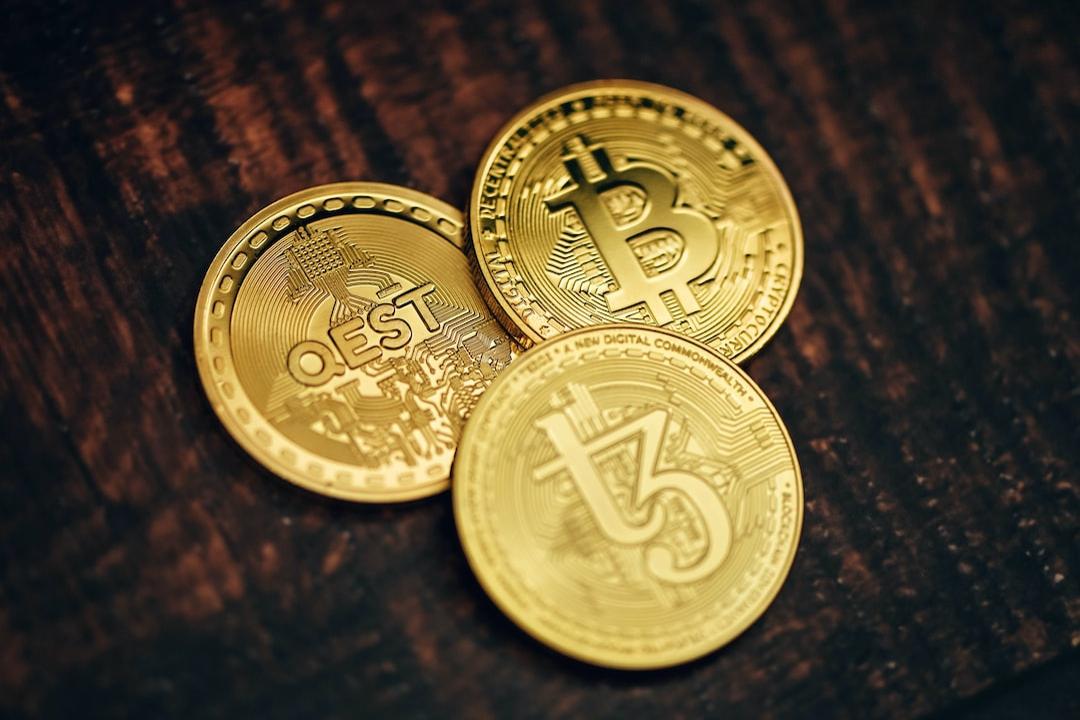What can we expect in the future of Bitcoin’s halving from a data perspective? Are there any opportunities to participate in new projects in the Bitcoin ecosystem?
(Previous summary:
JPMorgan: Bitcoin may drop to $42,000 after halving, current BTC is still overbought and the downtrend is not over yet)
(Supplementary background:
Bitcoin spot ETF had a net outflow of $740 million in three days, is the selling wave over?)
Table of Contents:
What is Bitcoin halving?
Historical impact of Bitcoin halving
What is the situation before the halving?
Miners are selling
Market correction or higher surge?
Updates and opportunities in the Bitcoin ecosystem
Runes
Bitcoin second layer solutions
Hello, on-chain partners! This week’s popular meme pack includes Wif, Pepe, Floki, etc. The AI coin shows no signs of stopping its upward trajectory, and Ethereum, which recently upgraded to “Dencun,” has been in the public eye. After Dencun, the gas fees for some Ethereum Layer 2 solutions have dropped to 1 cent! If you are active on-chain or participate in airdrop mining, this will be a very popular upgrade (waiting for the reduction in gas fees on the Ethereum mainnet…).
However, let’s not forget about a significant milestone that is coming up – a milestone that has reshaped the face of the crypto universe multiple times – Bitcoin halving. Let’s delve into it!
Today, we will explore in depth:
What is Bitcoin halving?
A deep dive into key indicators of the market and whether it is ready for a correction
Start using the Xverse wallet and test the Rune test network
Trial Botanix Lab’s test network
Participate in the B2 network’s test network
Bitcoin halving event reduces the block reward for miners, thereby reducing the rate at which new bitcoins are introduced into circulation. This mechanism is crucial to Bitcoin’s economic model and aims to control the circulating supply.
The next halving is expected to take place on April 17, 2024. After the halving, the mining block reward will be reduced from 6.25 BTC to 3.125 BTC. So, how will this affect the price?
Historically, Bitcoin halving has often been a precursor to significant price increases. This trend is mainly attributed to the expectation and realization of reduced Bitcoin supply growth, combined with sustained or increasing demand, leading to upward pressure on prices.

So far, Bitcoin has undergone three significant halving events:
First halving (November 2012): Block reward reduced from 50 BTC to 25 BTC. After this event, the value of Bitcoin rose from around $12 to over $1,100 within the following year, experiencing significant price growth. However, the market was smaller and less mature at that time, making it more susceptible to significant fluctuations.
Second halving (July 2016): Reward reduced from 25 BTC to 12.5 BTC. Similarly, in the months following the halving, the price experienced significant increases, rising from around $650 to a peak of about $2,800 in mid-2017, and then continuing to climb to nearly $20,000 by the end of the year, partly due to growing retail and institutional interest in cryptocurrencies.
Third halving (May 2020): This reduced the block reward to 6.25 BTC. The price of Bitcoin at the time of halving was around $8,600 and subsequently experienced significant volatility, breaking through $60,000 in April 2021. This surge was attributed to increased institutional adoption, economic uncertainty, and a surge in retail investors’ interest in cryptocurrencies.
Each halving helps reduce the speed at which new Bitcoin enters circulation. In theory, if demand remains stable or increases, this could increase scarcity and push up prices.
Whales are acquiring BTC
Whales have started acquiring Bitcoin.

The trading volume of Bitcoin has significantly increased to $116.2 billion, higher than the usual $10-20 billion during low market periods. This increase is primarily due to increased activity by whales, reaching levels not seen since August 2021.
Additionally, it appears that users prefer accumulating Bitcoin over Ether.

Miners are busy earning some profits. According to Glassnode data, the “miner balance” has decreased from 1.82 million BTC to 1.808 million BTC since the beginning of the year.

The past few months have undoubtedly been remarkable. Bitcoin has reached new all-time highs, and the market is booming across multiple industries. Can this surge continue? Will the music stop, leading to a significant correction? Let’s analyze the data that provides us with hints.
First, let’s understand how the market operates. Bitcoin is the primary force that drives the entire market. Therefore, it is crucial to understand key Bitcoin indicators that provide insights into buyer and seller behavior.
A single indicator represents just one data point and may not provide much meaning on its own. However, when a series of indicators is collectively analyzed, they can offer valuable insights into the current market conditions.
The first indicator, which examines the cycles of peaks and troughs in bull and bear markets, as shown below, indicates historically significant peaks that typically lead to corrections. Although it has not reached the most extreme range, this trend is worth noting.

The following indicators assess whether long-term holders and short-term holders are profitable. This is crucial because at any given moment, one or both of these groups may decide to sell if they collectively believe that the current price is suitable for selling. Currently, both groups are experiencing high profits, and the influx of new funds into the market also shows significant signs. This indicator is now rapidly approaching its highest point, indicating a critical moment.

The MVRV ratio, which stands for Market Value to Realized Value, compares the current market value of an asset with its realized value and represents the total cost basis or storage value of that asset. This indicator is crucial in assessing whether an asset’s price is overvalued or undervalued, thus providing valuable insights into the overall market’s profitability. It is worth noting that the significant difference between market value and realized value is an important indicator of potential market peaks or troughs, delineating periods of increased investor profit or loss.
Currently, the MVRV ratio is rapidly approaching a key moment historically associated with significant market adjustments. Furthermore, it has exceeded the level that previously indicated an impending downturn.

The BTC risk index provides valuable insights into market risk by examining the changes in Delta Cap and market capitalization. As the price of Bitcoin rises, the index decreases, and conversely, when the price falls, the index increases. Currently, this indicator is approaching its lowest point, indicating a potential correction in the market.

STH-SOPR helps interpret the timing of short-term holders’ inclination to buy or sell cryptocurrencies, providing valuable insights into market trends and potential trading opportunities. Currently, this indicator is approaching one of its peaks, indicating a trend of short-term holders selling their assets.

Profitable supply refers to the total amount of tokens in the network that currently have a value higher than their last transaction. Essentially, it tracks the number of tokens that have increased in value since the last transaction.
This indicator helps identify potential market peaks by indicating when investors may start selling to realize profits. It is important to note that profitable supply only shows whether a token is profitable and does not quantify the amount of profit gained. This indicator is also approaching its peak.

Overall, the comprehensive analysis of key indicators indicates that the market is overbought and extended. In the coming days and weeks, users should proceed with caution, reduce leverage usage, and stick to spot trading strategies. Historically, cryptocurrency corrections have often manifested as rapid and severe downturns. While the overall market trend remains upward, immediate indicators show concerning signs.
Now that we have an understanding of the upcoming outlook for the Bitcoin market, let’s explore some opportunities you can participate in. From ordinal to BRC-20 and more, the Bitcoin ecosystem is full of early opportunities to profit from. Let’s explore some.
The Rune protocol is a new method developed by Casey Rodarmor for tokenizing on the Bitcoin network, aiming to revolutionize this process.
Unlike traditional models like BRC-20 and ORC-20, Rune uses Bitcoin’s UTXO-based system to simplify token creation and management. It allows for storing multiple tokens in a single UTXO, reducing network congestion and increasing efficiency.
Rune, set to launch at the end of April, has caused a stir in the community, sparking various projects and initiatives such as RSIC and Rune Mania Miners, all aimed at leveraging the market’s anticipation for Rune. The release strategy includes directly minting the initial ten tokens or participating in airdrops through pre-mined projects.
Xverse Wallet
is preparing for the launch of the Rune-compatible token standard by adding support for the test network. Xverse users can now interact with Rune tokens and applications on the test network and intend to support the mainnet upon deployment.
The inclusion of Rune support is an important step in adapting to the dynamic landscape of Bitcoin and its related protocols. Get an Xverse wallet and start using the Rune test network with this handy video guide.
Bitcoin’s second layer protocols are innovative solutions developed on top of the Bitcoin blockchain to address its inherent scalability issues. By processing transactions off the main blockchain, these protocols significantly improve scalability, accelerate transaction speeds, and reduce costs.
Examples of such second layer solutions include the Lightning Network, Rootstock, Stacks, Liquid Network, and various Rollups. These technologies not only offer improved programmability but also expand the capabilities of Bitcoin.
Despite facing challenges such as potential centralization and routing issues, second layer solutions are crucial in facilitating wider adoption and fostering innovation within the Bitcoin ecosystem. Furthermore, many of these protocols are exploring interoperability with the Ethereum Virtual Machine, paving the way for the next wave of innovation.
Botanix Lab is developing a decentralized second layer solution for Bitcoin that combines the convenience of EVM with the security of Bitcoin.
Users can connect their MetaMask wallets to generate a Bitcoin deposit address, enabling direct transfers with exchanges. It aims to provide DeFi opportunities for both Ethereum Layer 2 users and native Bitcoin users.
Botanix ensures low fees and prioritizes decentralization. It estimates that Bitcoin’s DeFi market could be three times larger than Ethereum’s. Try it out on the test network here and check out this great interview with Aylo and its founder Willen S.
B2 Network is another second layer solution for Bitcoin that uses the Rollup protocol to ensure security through a challenge-response mechanism.
With these advancements, the B2 Network is ready to lead the application scenarios for Bitcoin.
Try their test network here.

Related Reports
VanEck predicts: If Trump is elected US President, he will support Bitcoin and the cryptocurrency industry!
JPMorgan: Bitcoin may drop to $42,000 after halving, current BTC is still overbought and the downtrend is not over yet
Bitcoin ETF has seen net outflows for four consecutive days: BTC falls below $65,000, and Ethereum loses $3,500. Is the selling pressure over?


